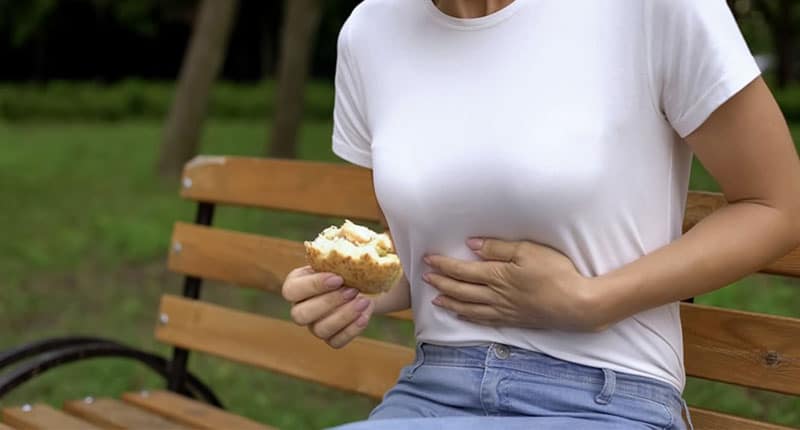
When it comes to enjoying our meals, the last thing anyone wants is to experience the unpleasant effects of food poisoning. Food poisoning occurs when we consume contaminated food, leading to a range of distressing symptoms. Understanding the common causes of food poisoning is essential for safeguarding our health and making informed choices about what we eat.
The Culprits Behind Food Poisoning
Bacteria: Tiny Trouble-Makers
Bacteria are perhaps the most notorious culprits when it comes to causing food poisoning. These microscopic organisms can proliferate in food under certain conditions and produce toxins that can wreak havoc on our digestive systems. Common bacterial culprits include Salmonella, E. coli, and Campylobacter.
Viruses: Sneaky Invaders
Viruses are another source of foodborne illnesses. Unlike bacteria, viruses require a living host to multiply, and they can be transferred through contaminated food and water. Norovirus and Hepatitis A are examples of viruses that can lead to food poisoning outbreaks.
Parasites: Unwelcome Guests
Parasites are often associated with exotic travel, but they can also lurk in our local food supply. These organisms can enter our bodies through undercooked meat, contaminated water, or unwashed produce. Giardia and Cryptosporidium are parasites known to cause food poisoning.
Common Sources of Contamination
Improper Food Handling
One of the leading causes of food poisoning is improper food handling. Cross-contamination, where bacteria or viruses from one food item are transferred to another, can happen easily if proper hygiene practices are not followed. This includes using separate cutting boards for raw meat and vegetables and washing hands thoroughly before and after handling food.
Inadequate Cooking
Cooking food thoroughly is essential to kill off harmful pathogens. Undercooked meat, poultry, and seafood can contain live bacteria or parasites that can cause food poisoning. Using a food thermometer and following recommended cooking temperatures is crucial to ensure the safety of your meals.
Unsafe Storage
Storing food at incorrect temperatures can lead to the rapid growth of bacteria. Refrigerated foods should be kept at temperatures below 40°F (4°C), while hot foods should be maintained at temperatures above 140°F (60°C). Failure to adhere to these temperature guidelines can result in bacterial growth and potential foodborne illnesses.
Contaminated Water
Water is a common vehicle for transmitting pathogens that cause food poisoning. Consuming water from unreliable sources or consuming ice made from contaminated water can introduce harmful microbes into the body. It’s essential to drink and use clean, treated water to minimize the risk of contamination.
Prevention and Safety Measures
Practice Good Hygiene
Washing hands frequently, especially before cooking and eating, can significantly reduce the risk of food poisoning. Remember to wash fruits and vegetables thoroughly as well.
Separate Raw and Cooked Foods
Avoid cross-contamination by using separate cutting boards and utensils for raw and cooked foods. This simple step can prevent the transfer of harmful pathogens.
Cook Thoroughly
Invest in a food thermometer and ensure that all meats are cooked to their recommended internal temperatures. This will kill any bacteria or parasites present in the food.
Store Properly
Refrigerate perishable foods promptly and keep your refrigerator at the right temperature. Consume leftovers within a safe timeframe to avoid bacterial growth.
Conclusion
Understanding the common causes of food poisoning empowers us to make informed choices about our meals. By following proper food handling, cooking, and storage practices, we can greatly reduce the risk of falling victim to foodborne illnesses. By prioritizing food safety, we ensure that every meal is a delightful and healthful experience.
FAQs
Q1: What are the typical symptoms of food poisoning?
- Symptoms of food poisoning can include nausea, vomiting, diarrhea, stomach cramps, and fever.
Q2: How long does it take for symptoms to appear after consuming contaminated food?
- Symptoms can appear anywhere from a few hours to several days after consuming contaminated food.
Q3: Can you get food poisoning from fruits and vegetables?
- Yes, if fruits and vegetables are not properly washed, they can carry harmful bacteria that lead to food poisoning.
Q4: Is it safe to eat raw seafood?
- Consuming raw seafood, such as sushi, comes with a risk of food poisoning. Make sure to choose reputable sources and handle seafood with care.
Q5: Are children more susceptible to food poisoning?
- Yes, children, elderly individuals, pregnant women, and individuals with weakened immune systems are more vulnerable to the effects of food poisoning.
